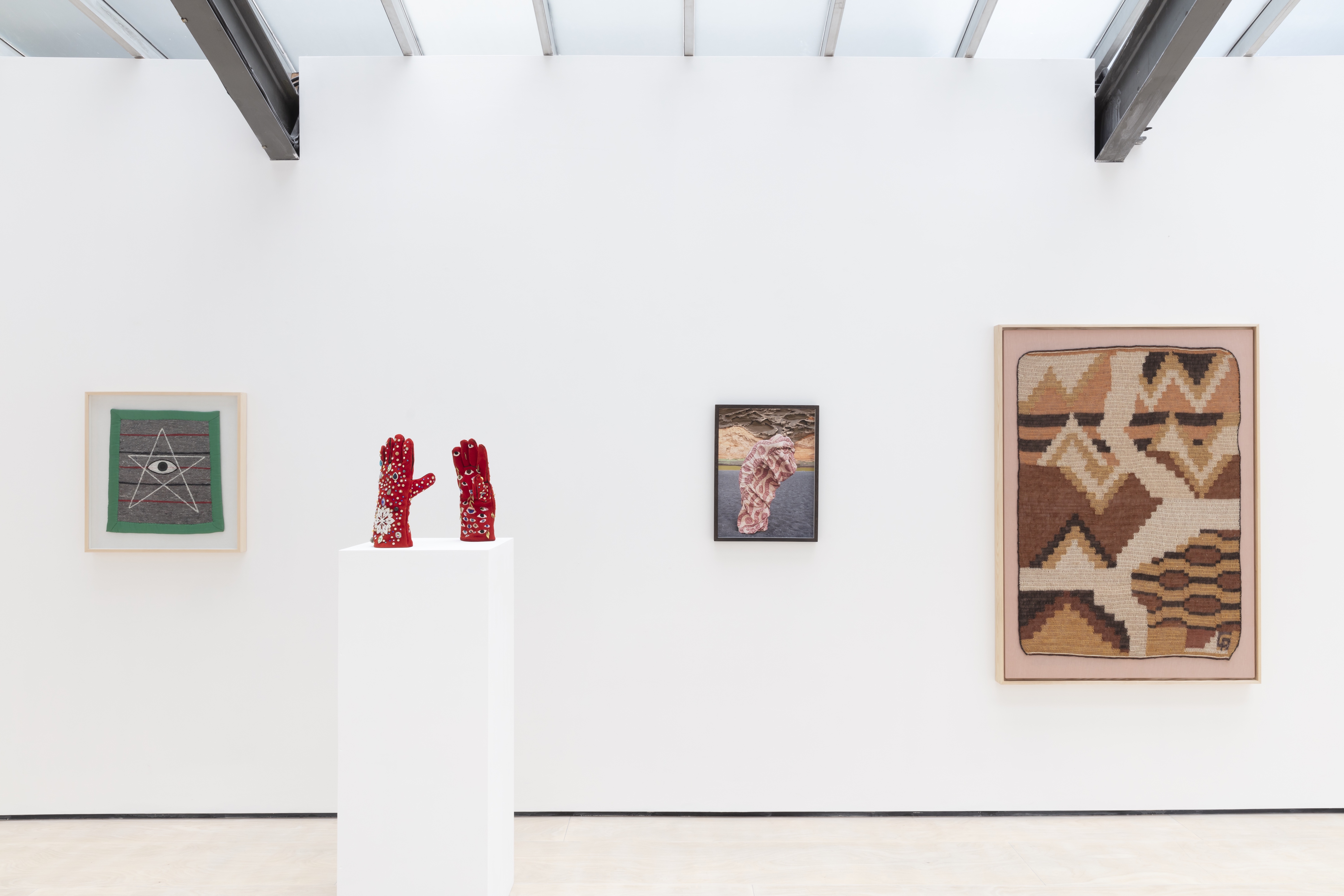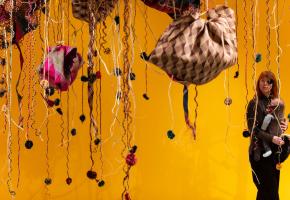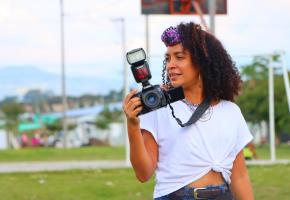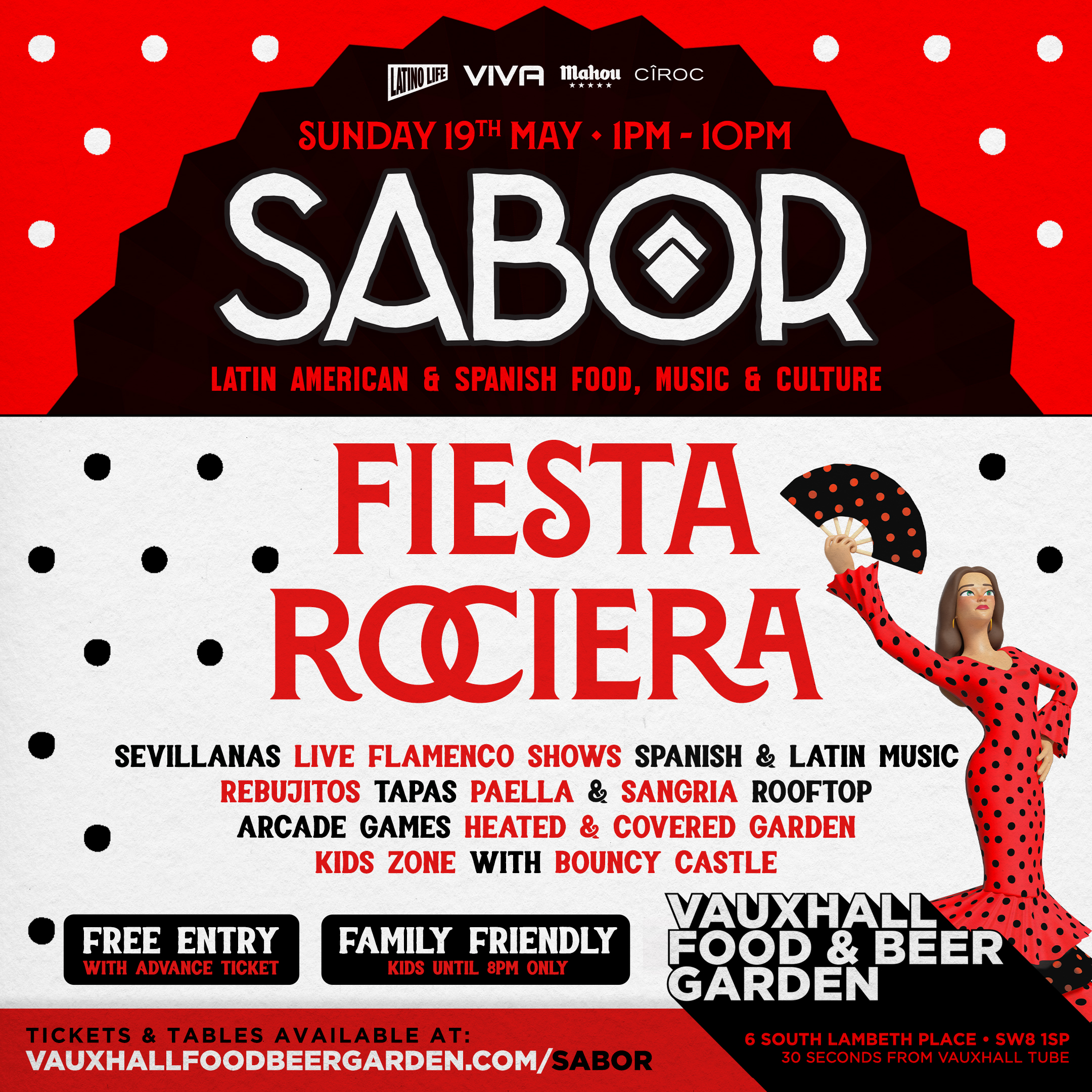In their new group exhibition Hecho a Mano, Cecilia Brunson Projects presents a collection of works from 8 artists representing 8 different Latin American countries. With this collection, the gallery states an intention to “move away from clichéd understandings of Latin American textile production and critically consider the historic European enchantment with pre-Columbian and indigenous culture”; textiles are examined as a window into power dynamics, cultural exchange and developing artistic practices.
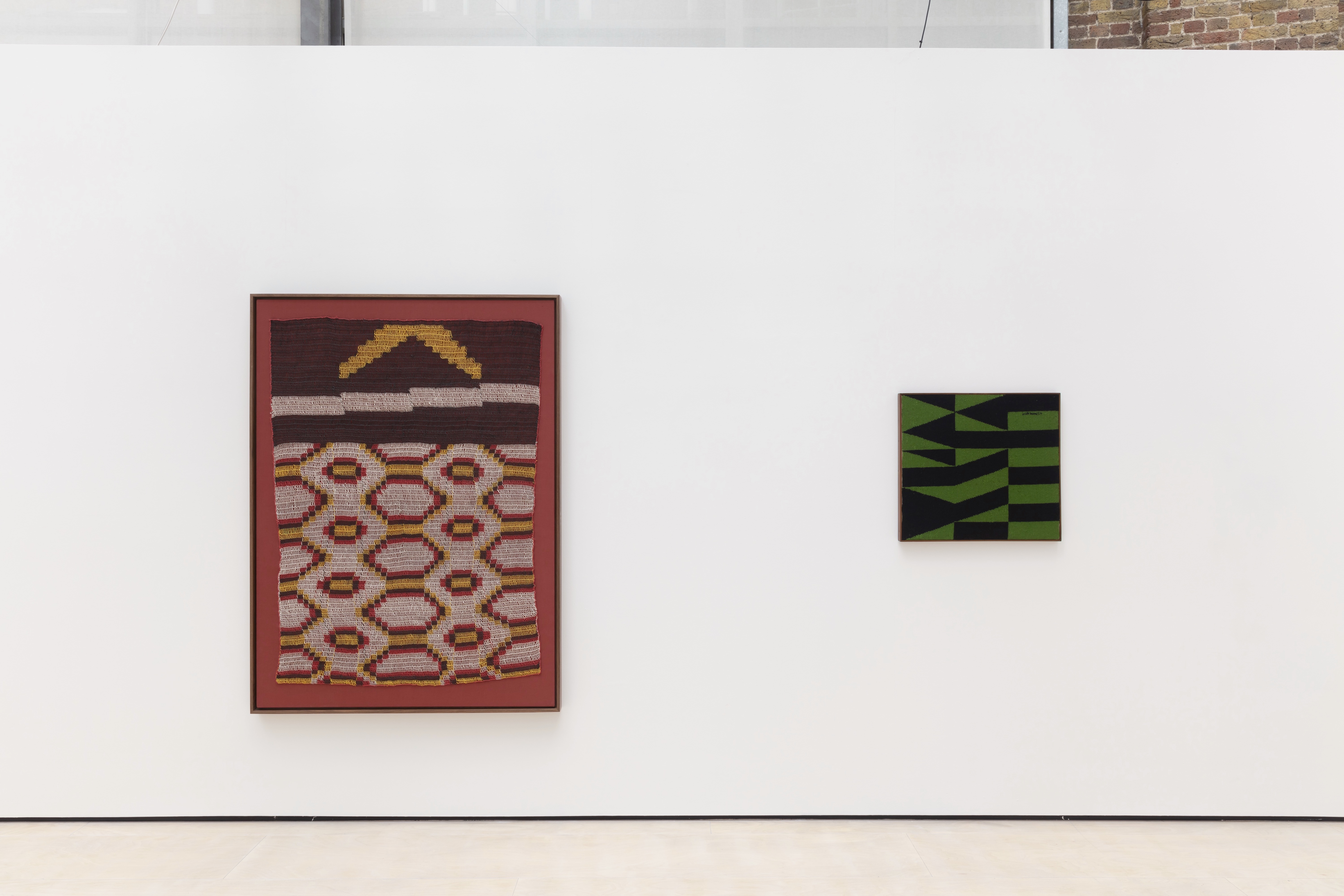
In so many ways, textile production has been overlooked as an art form. Historically categorised as “women’s work”, it has been disregarded and denigrated in a male-centric, patriarchal value system. Deemed outdated, the medium has been left to gather dust in the art history reject pile. And separated from “high art” through a lack of respect for the labour process and an association with a cultural “other”, textiles have been forced to reside in an inferior creative classification. This exhibition seeks not to simply elevate the position of textiles within the contemporary art world, but also to tackle head on the unjust mistreatment of textiles as a means of expression.
The gallery is alive with colour; each piece stands proudly and invites its own individual investigation into the history and application of the medium. Fátima Rodrigo’s Contradanza, created in 2024 for this exhibition specifically, is especially striking. Using embroidery, appliqué and beadwork to create a looming, decadent tapestry, Rodrigo offers a commentary on the “extraction and exploitation” (Alex White) of Andean symbols by Spanish colonialism and the modern Western fashion industry, alongside a tribute to the Indigenous mockery of Spanish high society when it arrived in Peru. Her work communicates the intricate practices of exchange and appropriation that have so long existed between Latin American and European cultures, and creates something beautiful in doing so.
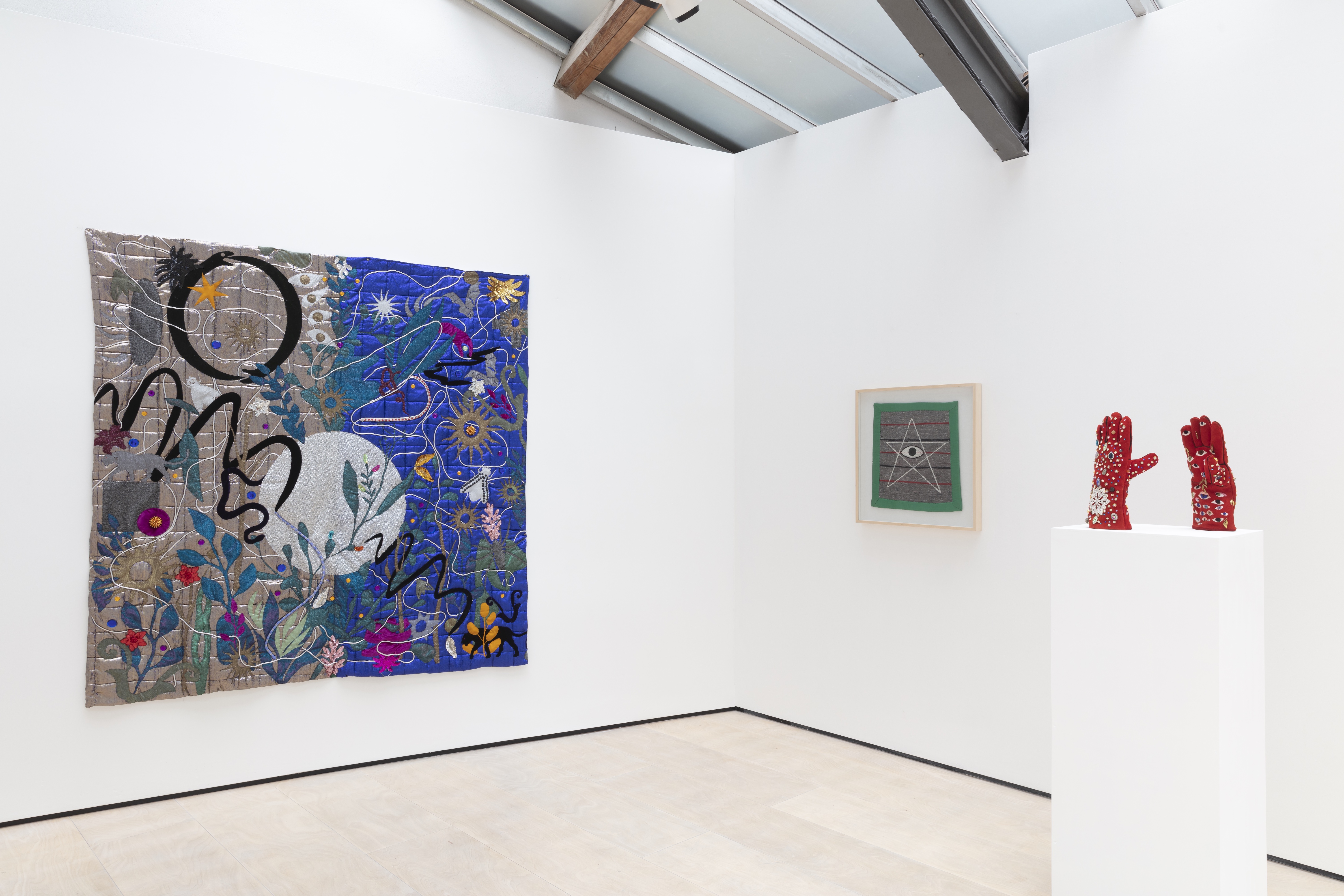
It is this monumental work which perhaps most effectively suggests the “push and pull between European and South American artists” which curator and director Alex White describes. However, each piece is worth taking the time to examine and understand: Claudia Alarcón’s work with the Sïlat collective speaks to the importance of community, and more specifically the community of women, in textile creation, whilst Feliciano Centurión queers a traditionally female medium and uses it to communicate the urgency and significance of physical legacy for people like himself who died of AIDS. The aesthetic quality of the exhibition is rich, and the works could be enjoyed simply for their visual beauty, but encouraging an appreciation first of the time and care that goes into them and then of the messages within them is where the exhibition really shines.
In interview, Alex White discussed the fascination with textiles that seems to have popped up in current shows. As compared to many other media, it allows a relatively transparent insight into “art as a process as well as a result”, putting particular emphasis on the “dialogue between the works and the thinking processes behind them”. She also described the social importance of collections such as this, which can speak not only to a growing communal desire to move away from fast fashion and towards working with our hands and our resources in the name of conservation, but equally to the activist nature of this art form, which of course can be directly confrontational, “but also can be political in the way that it’s made, in the material that it uses”.
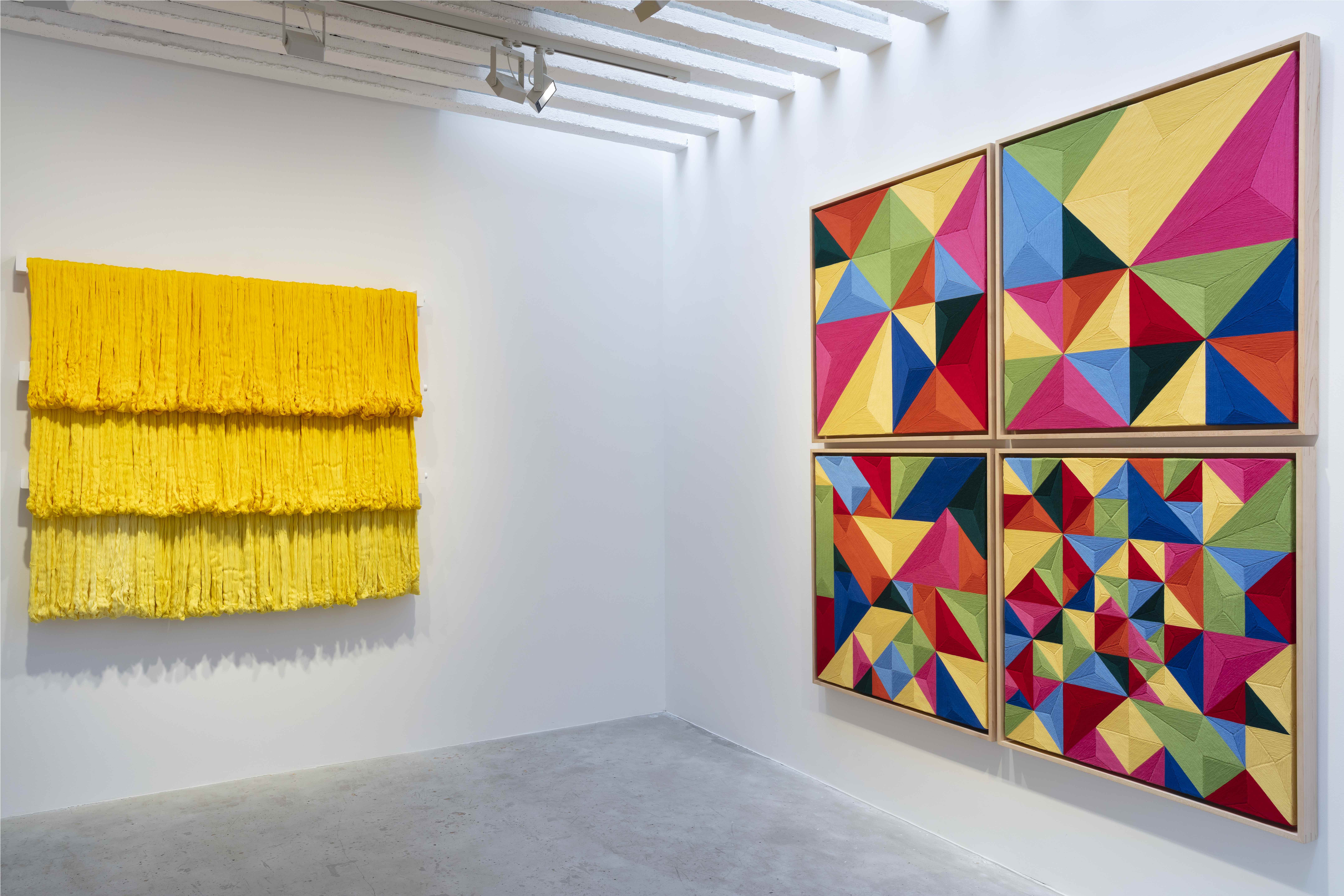
Hecho a Mano, fittingly, is poignant across many layers. The exhibition can be enjoyed on various levels: as a viewing experience, as a feminist reclamation, as social resistance, as a celebration of an under-appreciated medium. Meaning is woven into the collection, and the curation invites close consideration of the communities and histories which have worked towards such a beautiful output.


